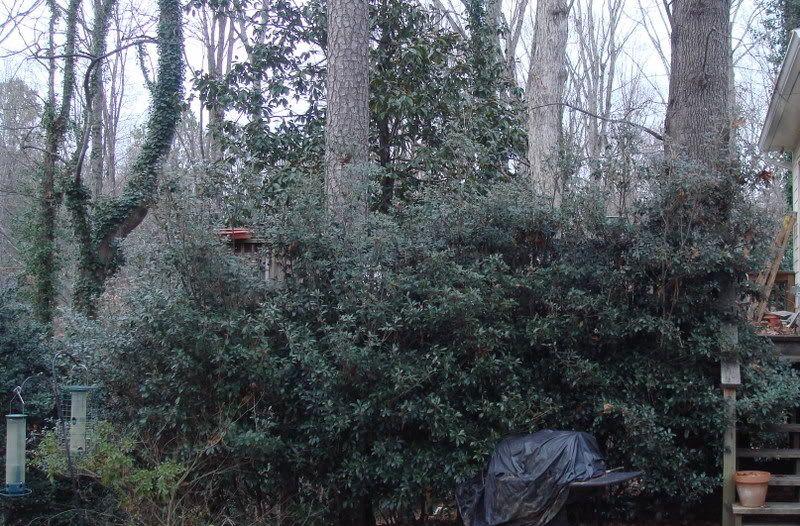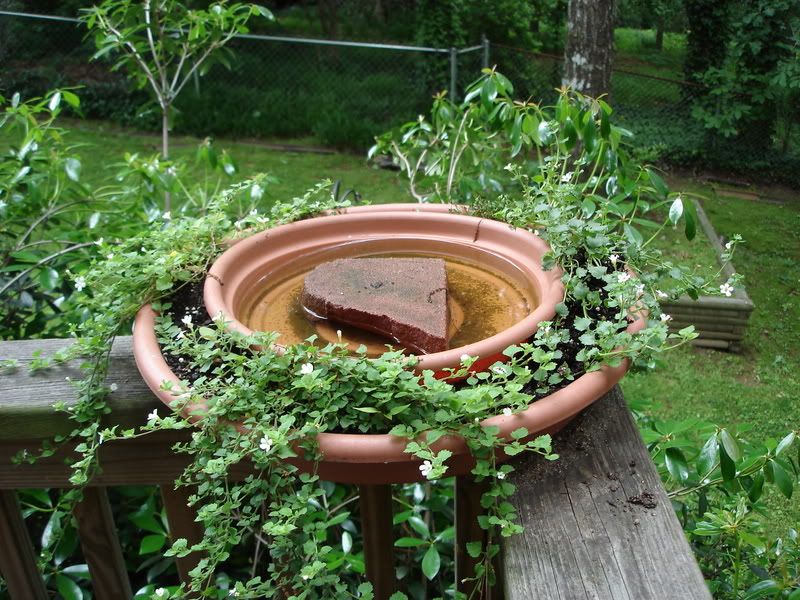One of the questions most new beekeepers ask is, "How do I deal with my neighbors?"
There's not an easy answer. Many beekeepers try to keep their beekeeping endeavors as unobtrusive as possible. I wasn't eager to invite anyone's opinion about my beekeeping. I did research it and found that since the bee is the state insect of Georgia, bees are allowed to "bee" anywhere in Atlanta.
Atlanta is a hilly city. I live in a particularly hilly neighborhood. When you enter my neighborhood (which is a U-shaped set of three streets) you become aware of the hills. One of the legs of the U goes downhill all the way to the street that makes the bottom of the U. Then you turn left to drive toward my house which begins the ascent of a hill. My house is at the peak of the hill and you go uphill on my driveway to get to my carport.
My bees are on the deck behind my house at the level of the main floor. Like many houses in Atlanta, my house is built into the hill, so it is a ranch but has a daylight basement on the back side. So the deck is about 14 feet high above the backyard, although it is at the level of my ranch house on the street side.
My neighbor on one side is steeply downhill from me. My neighbor on the other side is also on a slight downhill, and her deck is probably about 10 feet lower than mine.
Consequently I had my bees for two bee seasons without my neighbors having any idea.
I do wonder what they thought when they smelled smoke on the weekends. But I don't know them very well since I'm at work all day and nobody asked me about the smoky smell. And I was always having large bee labeled boxes of materials from
Dadant and
Betterbee or other bee companies delivered to my carport where they sat, available for viewing by anyone, until I came home from work.
This year after the honey harvest was over, I decided to give the neighbors on either side of my house a jar of my bees' delicious honey. Susan, my neighbor on the not-so-low side, was thrilled and talked to me all about what she knew about the healthful benefits of honey. She volunteered the other day that my honey was the best honey she had ever tasted. Below you can see the view from Susan's property line. Even in winter you can barely see the white of the hives on the deck and wouldn't know what they were to identify them. If you click on the picture you can see the whole thing.

My neighbor, Eric, on the other side, steeply downhill, has a baby - who was at the time about 8 months old. I gave the two of them a jar of honey when I saw them walking the baby. He seemed pleased, but not too excited to find out there were bees in the neighborhood. His wife said, "
Honey's poisonous for babies, you know." I saw Eric, the father, a few weeks later and asked him how they liked the honey. "Oh, we haven't tried it yet," he said and looked uncomfortable.
So I would say that the news that I have bees was met with mixed reviews by my immediate neighbors. I did get a note from Libba, the president of the neighborhood garden club inviting me to come to a meeting (since I'm at work and they meet in the daytime, I haven't been in years). At the end of the note she wrote, "I'd like to taste your honey, Honey!" That let me know that my beekeeping has become a subject of neighborhood conversation.
I have recently seen Libba and given her a jar of the honey.
My deck serves to keep my bees' flight paths above my neighbors' yards. The other way that bees intrude into people's lives is by finding a water source on the neighbor's property. It's important to provide your bees a
water source so they won't seek water at your neighbor's swimming pool or bird bath. I have provided my bees a water source, but they prefer nasty water out of the gutters on my house. The nearest house with a swimming pool is about 1/4 mile away.

Many beekeepers encourage telling your neighbors and sharing honey with them.
I don't think it's something you can make a blanket decision about doing. I was glad when I told my neighbors that I could say, "Oh, I've had these bees for two years." If the bees were new, people could have complained that the bees had bothered them ever since I got them, but nobody could claim that since the bees have been quiet as mice and my closest neighbors did not even know they were living on my deck.
The nice part of telling the neighbors is that I felt comfortable to store my boxes and supers in the carport during the winter without worrying about it. In the spring I may even fly the bee flag that I bought in the mountains.




























